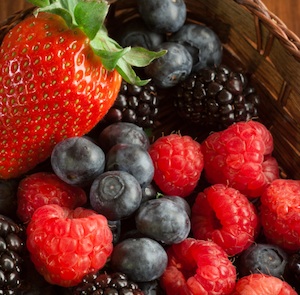Flavor and shelf life vital to future berry growth in U.K.
Continued success for the berry category in the U.K. will depend on supplying varieties with excellent flavor and shelf life in order to drive repeat purchases throughout the year.
That is the observation of two major berry marketers in the U.K. who claim that although berries are still a key line and sales remain very strong, much more can be done in terms of offering consistently high quality.
“Berry sales in the U.K. are still building during both the domestic and import seasons but they have definitely slowed down in the last two or three years,” explains John Gray, commercial director at Angus Soft Fruits, one of the leading suppliers of strawberries, raspberries, blueberries and blackberries to U.K. retailers.
According to data from Kantar Worldpanel, in the last 15 years annual berry sales in the U.K. have grown from £113 million (US$189 million) to more than £830 million (US$1.4 billion), with the average berry shopper buying over 6kg (12lbs) of berries in 2013.
Since the start of 2014, Kantar Worldpanel estimates that 65% of the U.K. population has bought berries as their popularity rises.
However, marketers say winter consumption is still surprisingly lower than in summer while overall there is room to increase per capita consumption throughout the year.
With that in mind, marketers believe the key to success lies largely with supplying the right varieties that offer consistently great flavor and shelf life for 12 months of the year.
“To achieve year-round consumption more can be done around improving consumer experience in terms of flavor,” Gray notes.
“And you can’t have good taste without acceptable shelf-life both in terms of a retail level as well as take-home shelf-life which is just as important.”
Sam Rowe, product manager at BerryWorld, another leading berry supplier in the U.K., agrees that improving the overall experience for shoppers is essential in order to drive growth from a consumption perspective.
“In recent years the total grocery market and fruit market has shown that shoppers buy products more often, but buy less when they shop,” he says.
“As a result, we have a great opportunity to delight the shopper on every trip and encourage them to buy berries every time they shop for fruit.”
That is why varietal development is so critical, according to Rowe, who adds that winter, particularly for strawberries, remains a key opportunity.
“The development of better tasting varieties, such as Viva from Spain and Morocco, should help us to drive frequency and, in turn, growth,” he points out.
Varietal development
Since its inception, BerryWorld’s breeding program BerryWorld Plus has made over 310,000 crosses in search of varietal improvements.
“Programs like ours seek to improve not only taste and texture for the end consumer but also yield and disease resistance to make the category sustainable for growers longer term,” states Rowe.
Last year Angus Soft Fruits launched a second generation premium strawberry variety called Ava Rosa as part of its own efforts to improve yield, taste and shelf life.
“That’s the latest offer from our breeding program and we have further new strawberry varieties in the pipeline but I can’t reveal anything now,” he comments.
But regardless of varietal offer and quality, Gray claims U.K. sales of strawberries will always spike in the summer because U.K. consumers will always associate summer with strawberries.
Charlotte Knowles, head of marketing at BerryWorld, agrees that there is a heritage mentality with strawberries and the summer in the U.K., but points out that the domestic offer is extending into the autumn.
“U.K. shoppers typically associate strawberries with summer, Wimbledon and the June to August period, but advances in production techniques mean they can buy British strawberries from March to November with varieties like Sweet Eve that taste great through the autumn,” she says.
Blackberries present greatest opportunities
Kantar Worldpanel estimates that consumer penetration of strawberries remains very high in the U.K. at around 70-80%.
In comparison, blueberry and raspberry penetration registers at 30-40% with much space still to grow.
Blackberries, meanwhile, are still only purchased by 11% of the U.K. population and therefore offer the biggest opportunity for a major step change.
In the last 24 weeks, year-on-year sales of blackberries have declined by 5.6%, according to Kantar Worldpanel, while both strawberries and raspberries have seen a 20% uplift and blueberries have risen by 8%.
Gray explains that the U.K.’s blackberry offer has suffered due to a weaker varietal mix following a much later commercial development of the crop compared with other berries.
“The standard blackberry varieties sold during the U.K. season are fairly acidic but new varieties are coming through that are offering sweeter flavor, like Karaka Black,” he claims.
“We are starting to see some retailers differentiate the blackberry offer into sweeter, snacking varieties and the standard varieties that could be used for cooking, which is having a positive impact on sales.”
On the downside, Gray points out that other restrictions to growth for the whole berry category lie with securing adequate retail shelf space, particularly with regards to competition from other fruits.
Achieving the right pricing mechanic that resonates with U.K. consumers remains another challenge as well as offering the right pack sizes to suit the different market demographics.
Fresh Fruit Portal




